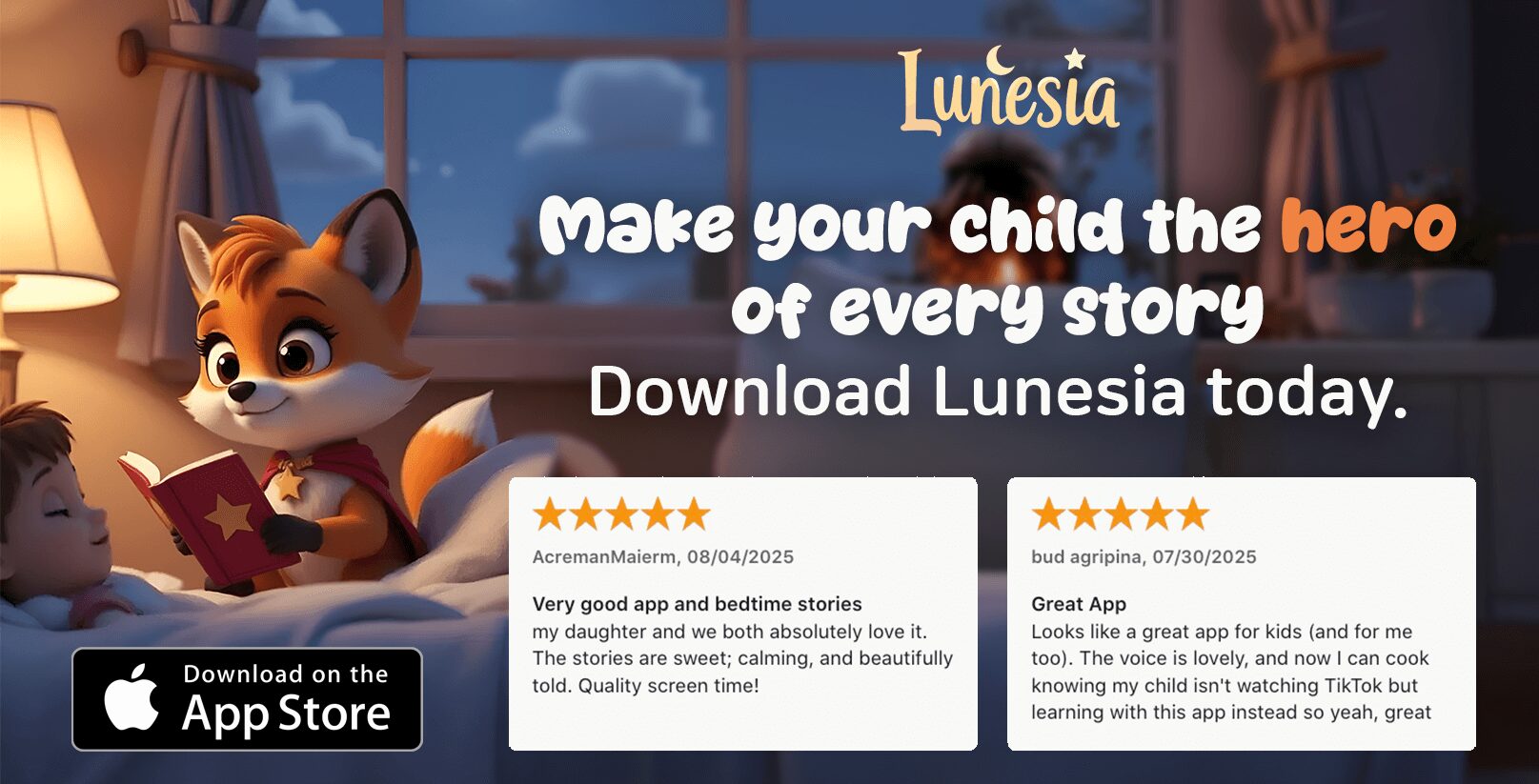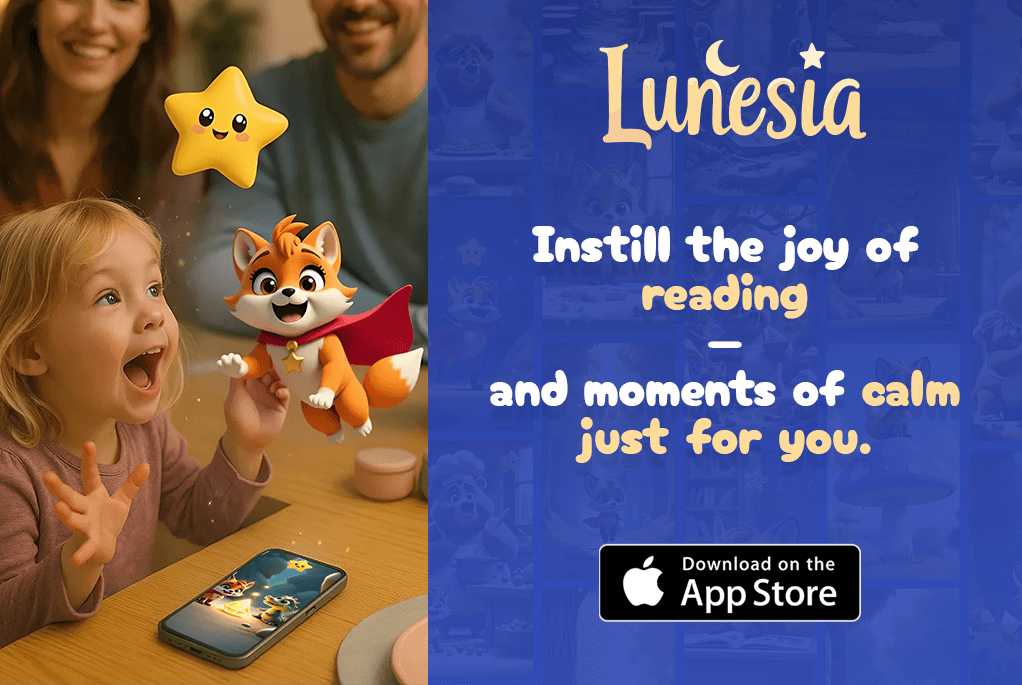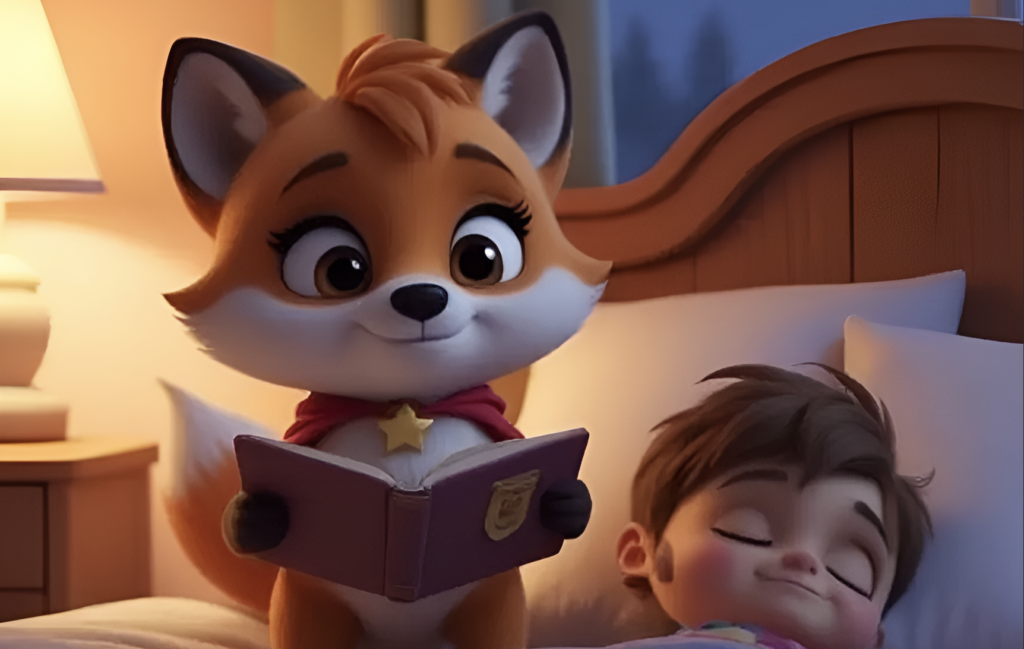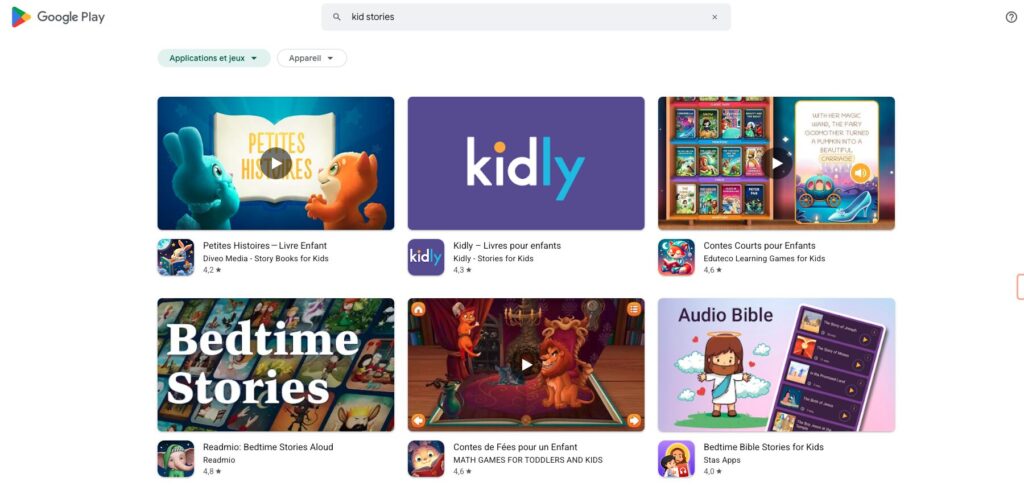When my daughter was four, she asked me why the boy in her favorite story didn’t share his toys. That simple question opened the door to a conversation about kindness and fairness. Stories have a unique way of sparking these moments, making them a powerful tool for teaching ethics and morality.
From ancient fables to modern tales, stories have always been a bridge to understanding right and wrong. They help children develop a sense of empathy and responsibility. Whether it’s a lesson about sharing or standing up for others, stories make these concepts relatable and memorable.
In this guide, I’ll share why storytelling is such an effective way to nurture character and decision-making. Together, we’ll explore how these timeless lessons can shape your child’s social behavior and ethical development. Let’s dive in!
Introduction to Teaching Values Through Stories
Stories have always been a way to pass down lessons from one generation to the next. They simplify complex ideas, making them accessible to young minds. Through relatable characters and engaging plots, children learn about right and wrong in a way that feels natural and memorable.
Storytelling has long been a bridge between tradition and modern values. It helps shape societal codes and ethical behaviors. For example, tales like “The Boy Who Cried Wolf” teach honesty, while “The Golden Touch” warns against greed. These stories make abstract concepts tangible for kids.
Why Stories Matter for Moral Education
Stories matter because they connect with children on an emotional level. They spark curiosity and encourage critical thinking. When kids see characters facing dilemmas, they learn to reflect on their own choices. This process builds a foundation for ethical decision-making.
Moreover, stories introduce children to diverse perspectives. They learn about society and its values through the experiences of others. This broadens their understanding and fosters empathy, a key component of moral development.
Goals of This Ultimate Guide
This guide aims to provide you with timeless moral tales and practical teaching strategies. Whether you’re navigating traditional fables or modern narratives, you’ll find tools to make these lessons engaging and effective.
By the end, you’ll understand how stories can illuminate the differences between right and wrong. You’ll also gain insights into inspiring ethical decision-making in your child. Together, we’ll explore how storytelling can shape their character and behavior in meaningful ways.
The Importance of Morality in Child Development
From the moment my son started asking questions about fairness, I knew stories would be our greatest ally. They’re not just entertaining; they’re a powerful tool for shaping a child’s understanding of right and wrong. A strong moral foundation is essential for their overall development and behavior.
Research shows that children who engage in activities promoting moral development demonstrate a 20% increase in empathy levels. This isn’t just about teaching rules—it’s about helping them understand the why behind actions. Stories, whether rooted in religion or secular teachings, provide a relatable framework for these lessons.
Building a Moral Foundation
Building a moral foundation starts early. Studies suggest that by age 4, children begin to make judgments based on fairness and welfare. This is where stories come in. Tales like “The Boy Who Cried Wolf” teach honesty, while “The Golden Rule” emphasizes kindness.
Parents play a vital role in this process. By discussing the choices characters make, we help children reflect on their own decisions. This reflection is key to developing a sense of integrity and responsibility.
Influence on Behavior and Decision Making
Early moral education has a lasting impact. Children with strong moral foundations are 30% more likely to exhibit socially responsible behavior later in life. Stories help them navigate complex situations, teaching them to consider the consequences of their actions.
For example, when a character faces a dilemma, children learn to think critically about what they would do. This process not only builds empathy but also prepares them for real-life challenges. As one study found, children who understand moral consequences tend to achieve 25% higher academic performance.
By integrating moral lessons into everyday stories, we can guide our children toward becoming thoughtful, compassionate individuals. It’s not just about teaching right and wrong—it’s about helping them understand the value of kindness, fairness, and integrity in their lives.
Defining Morality: Historical and Modern Perspectives
Growing up, I often wondered why certain actions were considered right or wrong. This curiosity led me to explore how values have evolved over time. From ancient codes to modern ethical frameworks, the concept of morality has always been shaped by societal needs and cultural influences.
Historically, moral codes were strict and rooted in tradition. For example, the Ten Commandments provided clear guidelines for behavior. These principles emphasized honesty, respect, and fairness, forming the foundation of many ethical systems.
Traditional Moral Codes
Traditional codes often focused on community welfare. In ancient Greece, philosophers like Aristotle emphasized virtues like courage and wisdom. These principles were seen as essential for a harmonious society.
Similarly, Confucian teachings in China stressed family loyalty and social harmony. These values were not just rules but a way of life, guiding individuals in their daily interactions.
Contemporary Perspectives on Morality
Today, morality encompasses a broader spectrum. Modern ethical frameworks consider individual rights and global challenges. For example, environmental ethics highlight our responsibility toward the planet.
Despite these changes, many traditional values remain relevant. Concepts like honesty and kindness are still foundational in shaping ethical behavior. This blend of old and new creates a dynamic understanding of morality.
By comparing historical and modern perspectives, we can better appreciate the evolution of ethical thought. This understanding helps us navigate today’s complex moral challenges with clarity and compassion.
Moral Values and Ethical Principles in Stories
As a parent, I’ve always been fascinated by how stories can shape a child’s understanding of right and wrong. They’re not just entertaining; they’re a reflection of the moral code and culture that define our society. Through relatable characters and engaging plots, stories teach children about honesty, empathy, and respect in a way that feels natural and memorable.
Stories have always been a way to pass down lessons from one generation to the next. They simplify complex ideas, making them accessible to young minds. For example, tales like “The Boy Who Cried Wolf” teach honesty, while “The Golden Rule” emphasizes kindness. These stories make abstract concepts tangible for kids.
Key Lessons from Timeless Tales
Timeless tales are rich with lessons that reflect the norms and values of their time. They serve as a bridge between tradition and modern ethics, helping children understand the importance of fairness, integrity, and compassion. Here are some key lessons from classic stories:
| Story | Moral Lesson |
|---|---|
| The Boy Who Cried Wolf | Honesty is essential for trust. |
| The Golden Rule | Treat others as you want to be treated. |
| The Tortoise and the Hare | Perseverance leads to success. |
| The Lion and the Mouse | Kindness is always rewarded. |
These stories not only teach children about ethical principles but also encourage them to reflect on their own behavior. By discussing the choices characters make, we help them develop a sense of responsibility and empathy.
Understanding these narratives can help parents choose the right stories that resonate with their family’s culture and values. Whether it’s a tale about honesty or a fable about kindness, stories have the power to shape a child’s character in meaningful ways.
Integrating Moral Philosophy and Kid-Friendly Narratives
Teaching kids about right and wrong doesn’t have to be complicated; stories make it simple and fun. By weaving moral philosophy into engaging tales, we can build a strong foundation for their ethical understanding. Over time, these stories help children grasp complex ideas like duty and virtue in a way that feels natural.
Take Kant’s ethics, for example. His focus on duty can be adapted into a story about a character who keeps a promise, even when it’s hard. This approach makes abstract terms like “duty” relatable and memorable for young listeners. It’s about turning philosophy into a tool for everyday learning.
Here are some step-by-step techniques to blend moral philosophy with storytelling:
- Simplify the Concept: Break down complex ideas into simple actions. For instance, “virtue” can become “doing the right thing, even when no one is watching.”
- Use Relatable Characters: Create characters who face dilemmas that mirror real-life situations. This helps children connect with the story’s lesson.
- Add Fun Elements: Incorporate humor or adventure to keep the story engaging while still delivering a moral message.
Over time, these techniques help children develop a deeper understanding of ethical principles. They learn to reflect on their choices and see the value in kindness, honesty, and fairness. It’s not just about teaching rules—it’s about nurturing a sense of responsibility.
Here’s a table showing how philosophical concepts can be adapted into kid-friendly stories:
| Philosophical Concept | Kid-Friendly Adaptation |
|---|---|
| Kant’s Duty | A story about a character who keeps a promise, even when it’s hard. |
| Aristotle’s Virtue | A tale about a hero who chooses kindness over selfishness. |
| Utilitarianism | A narrative where the main character helps the most people, even at personal cost. |
By integrating moral philosophy into storytelling, we create a strong foundation for children’s ethical development. These stories become tools for teaching life lessons in a way that’s both meaningful and enjoyable. Over time, they shape not just behavior but character, guiding kids toward becoming thoughtful, compassionate individuals.
The Role of Family and Community in Teaching Morals
The bond between family and community has always been a cornerstone of teaching right from wrong. Both play unique roles in shaping a child’s moral compass, offering examples and support that guide their understanding of values.
Families provide the first lessons in ethics. Through daily interactions, children learn about honesty, kindness, and respect. For example, when parents model fairness in decision-making, kids see the difference it makes in relationships. These small actions at home create a lasting impact.
Communities amplify these teachings. Shared activities, like volunteering or storytelling events, reinforce values in a broader context. A study found that children who participate in community programs are 25% more likely to exhibit socially responsible behavior. This shows how collective efforts strengthen individual growth.
Asking the right questions is another key aspect. When children face moral dilemmas, guiding them to reflect on their choices helps build critical thinking. For instance, instead of simply saying, “That’s wrong,” ask, “How do you think your actions affect others?” This approach encourages deeper understanding.
Here’s a table highlighting the roles of family and community in moral education:
| Role | Impact |
|---|---|
| Family Values | Provide foundational lessons in honesty, kindness, and respect. |
| Community Traditions | Reinforce values through shared activities and collective experiences. |
| Asking Questions | Encourage critical thinking and reflection on moral dilemmas. |
| Shared Stories | Teach life lessons in a relatable and memorable way. |
Personal experiences also play a vital role. I remember how my daughter’s participation in a community cleanup event sparked a conversation about responsibility. These moments show how family and community work together to shape a child’s ethical development.
“It takes a village to raise a child. The values we teach at home are strengthened by the lessons we learn together as a community.”
By combining family guidance with community support, we create a nurturing environment for children to grow into thoughtful, compassionate individuals. It’s not just about teaching rules—it’s about helping them understand the value of kindness, fairness, and integrity in their lives.
Cultural Influences on Moral Narratives
I’ve always been amazed at how stories from different cultures can teach the same lessons in unique ways. Whether it’s through folktales, family traditions, or cultural activities, these narratives shape how children understand right and wrong. From Asia to Africa, every culture has its own way of imparting values, and these differences enrich our global understanding of ethics.
Take, for example, the way family traditions play a role in storytelling. In many cultures, grandparents pass down tales that reflect their community’s values. These stories often emphasize respect for elders, kindness to strangers, and the importance of community. Such narratives are not just entertaining; they’re a reflection of the cultural activities that define a society.
Diverse Cultural Perspectives
Cultural differences in storytelling can be striking. In Western cultures, stories often focus on individual achievement and personal responsibility. In contrast, Eastern narratives might emphasize harmony and collective well-being. These variations highlight how different societies define right and wrong based on their unique values.
Research shows that while cultural narratives vary, certain universal themes remain. Concepts like fairness, honesty, and compassion appear in stories worldwide. This suggests that despite cultural differences, there’s a shared understanding of what it means to be ethical.
Here are some examples of how cultural narratives differ:
- Western Stories: Often focus on individual heroes and personal choices.
- Eastern Stories: Emphasize community and the greater good.
- African Folktales: Highlight the importance of wisdom and respect for nature.
These differences teach children to appreciate diverse perspectives. They learn that right and wrong can be understood in multiple ways, depending on cultural context.
“Stories are the threads that weave the fabric of culture. They teach us who we are and how we should live.”
By embracing multicultural narratives, we can help children develop a broader understanding of global ethics. Whether it’s through family traditions or cultural activities, these stories enrich their moral education and prepare them for a diverse world.
Exploring the Psychology of Moral Development
The journey of moral development in children is a complex yet deeply rewarding process. As parents, we often wonder how our kids learn to distinguish between right and wrong. Psychological studies show that this development follows identifiable stages, shaped by an evolving understanding of ethics and social roles.
Understanding these stages can help us guide our children more effectively. From infancy to adolescence, their moral reasoning evolves, influenced by family, personality traits, and emotional growth. Let’s dive into the key theories and stages that explain this fascinating process.
Stages of Moral Reasoning
One of the most influential theories in this field is Kohlberg’s stages of moral development. He identified six stages, grouped into three levels: Preconventional, Conventional, and Postconventional. Each stage reflects a deeper understanding of ethics and social responsibility.
For example, in the Preconventional level, children make decisions based on avoiding punishment or gaining rewards. As they grow, they move into the Conventional level, where they focus on social norms and maintaining order. Only a small percentage of people reach the Postconventional level, where they develop abstract principles of justice.
Psychological Theories and Models
Kohlberg’s theory is just one part of the puzzle. Other models, like Carol Gilligan’s emphasis on care and relationships, offer additional insights. These theories highlight how moral development is influenced by both individual traits and external factors, such as family and culture.
Research shows that emotional reasoning plays a significant role in moral decisions. For instance, children who feel empathy are more likely to act ethically. This interplay between emotion and reasoning forms the foundation of a cohesive moral system.
| Stage | Description |
|---|---|
| Preconventional | Decisions based on rewards and punishments. |
| Conventional | Focus on social norms and maintaining order. |
| Postconventional | Development of abstract principles of justice. |
By understanding these stages and theories, we can better support our children’s moral growth. Whether it’s through storytelling or everyday conversations, these insights help us nurture their ethical development in meaningful ways.
Evolutionary Insights: How Morality Shapes Social Behavior
Nature offers fascinating insights into how moral behaviors evolved. From the earliest human societies to modern communities, our instincts for empathy and cooperation have been shaped by survival needs. These behaviors aren’t just cultural—they’re deeply rooted in our biology.

Evolutionary biology research shows that moral behaviors, like empathy and reciprocity, were essential for the survival of human groups. These traits helped early humans work together, share resources, and protect one another. Over time, these actions became ingrained in our social fabric.
Evolution of Moral Behaviors in Human Societies
In early human societies, cooperation was key to survival. Individual actions often had a direct impact on the group. For example, sharing food ensured that everyone had enough to eat, even during tough times. This sense of fairness and responsibility became a cornerstone of moral development.
Studies show that hunter-gatherer societies relied heavily on mutual aid. Food sharing wasn’t just a kind gesture—it was a survival strategy. This behavior fostered trust and strengthened social bonds, laying the foundation for modern ethical principles.
Lessons from Social Animals
Social animals, like primates and marmosets, also teach us valuable lessons about moral behavior. These creatures display empathy, altruism, and cooperation, often mirroring human traits. For instance, marmosets share food proactively, even without an audience, showing genuine concern for others.
Here’s a comparison of moral behaviors in humans and social animals:
| Species | Behavior | Moral Insight |
|---|---|---|
| Humans | Food sharing | Fosters trust and cooperation. |
| Marmosets | Proactive sharing | Shows empathy and altruism. |
| Chimpanzees | Targeted helping | Highlights occasional kindness. |
These examples show that moral instincts aren’t unique to humans. They’re a shared trait among social species, shaped by the need for survival and group harmony.
Understanding these evolutionary insights can enhance how we teach morals today. By highlighting the connection between individual actions and group well-being, we can help children see the value of kindness and cooperation in their own lives.
Creating Engaging Storytelling Techniques
Storytelling became my go-to method when I wanted to teach my kids about making thoughtful decisions. It’s not just about the story itself but how you present it. By using creative techniques, you can turn simple tales into powerful tools for shaping their understanding of right and wrong.
One of the most effective ways to engage kids is through interactive storytelling. Instead of just reading, involve them in the process. Ask questions like, “What would you do if you were in this situation?” This encourages them to think critically and reflect on their choices.
Dramatizations are another great approach. Act out scenes from the story or use props to bring the characters to life. This makes the content more memorable and helps kids connect emotionally with the lesson. For example, when we acted out “The Lion and the Mouse,” my son understood the value of kindness in a whole new way.
Here are some proven techniques I’ve used to make storytelling more engaging:
- Interactive Discussions: Pause during the story to discuss the character’s choices and their consequences.
- Hands-On Activities: Create crafts or drawings that relate to the story’s theme.
- Role-Playing: Let kids take on the roles of characters and act out scenarios.
These methods not only make storytelling fun but also encourage kids to think about their own decisions. When they see characters facing dilemmas, they learn to consider the impact of their actions on others.
“Every story is a chance to guide your child’s understanding of values. The way you tell it can make all the difference.”
Finding your own unique way to present these lessons is key. Whether it’s through humor, adventure, or heartfelt moments, the goal is to make the content resonate deeply with your child. Over time, these stories will shape their character and guide them toward thoughtful, compassionate choices.
Practical Tips for Storytelling that Impart Moral Lessons
As I watched my children act out a story, I saw firsthand how interactive storytelling could shape their understanding of right and wrong. It’s not just about reading a tale; it’s about making it come alive. Research shows that interactive storytelling activities not only capture attention but also enhance retention of moral lessons. Here’s how you can make storytelling a powerful tool for teaching values.
Interactive Storytelling Activities
One of the best ways to engage kids is by involving them in the story. Instead of just reading, ask questions like, “What would you do in this situation?” This encourages them to think critically and reflect on their choices. Studies show that active participation helps children retain lessons better and apply them in real life.
Role-playing is another effective method. Let your kids take on the roles of characters and act out scenarios. For example, when we acted out “The Lion and the Mouse,” my son understood the value of kindness in a whole new way. This hands-on approach makes the story’s message more tangible and memorable.
Here are some practical tips to make storytelling interactive:
- Use Props: Simple items like hats or toys can bring characters to life and make the story more engaging.
- Encourage Creativity: Let kids add their own twists to the story, fostering their imagination and problem-solving skills.
- Ask Open-Ended Questions: Questions like “Why do you think the character made that choice?” help kids analyze the story’s moral lesson.
Hands-on activities are also a great way to reinforce the story’s message. For instance, after reading a tale about sharing, you could create a craft project where kids make something to give to a friend. This turns abstract ideas into concrete actions.
“Interactive storytelling isn’t just about teaching morals—it’s about creating moments that kids will remember and carry with them.”
By using these techniques, you can turn storytelling into a dynamic experience that shapes your child’s view of the world. Whether it’s through role-playing, creative discussions, or hands-on activities, these methods make moral lessons both fun and impactful.
Infusing Ethics and Morals into Everyday Scenarios
Everyday routines, like sharing snacks or resolving disputes, are perfect opportunities to teach ethics. These moments aren’t just about following rules; they’re about understanding the why behind actions. By integrating ethical lessons into daily life, we help children see the connection between their choices and the world around them.
Take sharing, for example. When my kids argue over a toy, I use it as a chance to discuss fairness and empathy. I ask, “How would you feel if someone took your toy?” This simple question helps them see beyond their own needs and consider others’ feelings. It’s a small step, but it builds a foundation for ethical behavior.
Conflict resolution is another great teaching moment. Instead of stepping in to solve every argument, I encourage my kids to talk it out. This teaches them to respect others’ opinions and find solutions together. These skills are essential for navigating real-life challenges.
Here are some practical strategies to make ethics part of your family’s routine:
- Model Behavior: Show kindness and fairness in your actions. Kids learn by watching you.
- Ask Questions: Encourage critical thinking by asking, “What do you think is the right thing to do?”
- Celebrate Good Choices: Praise your child when they make ethical decisions, like sharing or apologizing.
Embedding these lessons into daily life helps children develop a strong belief in doing what’s right. Over time, these small moments add up, shaping their character and guiding their decisions.
| Everyday Scenario | Ethical Lesson |
|---|---|
| Sharing a toy | Fairness and empathy |
| Resolving a conflict | Respect and cooperation |
| Helping with chores | Responsibility and teamwork |
By turning everyday moments into teaching opportunities, we help children understand the law of fairness and the importance of kindness. These lessons become second nature, guiding them toward thoughtful, compassionate choices.
“Ethics isn’t just about big decisions; it’s about the small choices we make every day.”
Through these strategies, we can create a nurturing environment where ethics and morals are woven into the fabric of daily life. It’s not just about teaching rules—it’s about helping children see the value of doing what’s right, even when no one is watching.
Balancing Entertainment and Educational Content
One afternoon, while reading a story with my son, I realized how seamlessly fun and learning could blend together. This balance is crucial for keeping children engaged while imparting philosophical concepts and moral lessons. Research shows that when stories are both entertaining and educational, children are more likely to absorb the underlying messages.
Finding the right mix of humor, adventure, and ethical messages can be challenging, but it’s worth the effort. Stories that are too preachy can lose a child’s interest, while those that are purely entertaining might miss the opportunity to teach valuable lessons. The key is to weave educational content into narratives that captivate young minds.
Engaging the Young Audience
Children are naturally drawn to stories that spark their imagination. To keep them engaged, it’s important to integrate philosophical ideas without overwhelming them. For example, a tale about a character who faces a dilemma can subtly introduce the concept of fairness or empathy. This approach makes the lesson relatable and memorable.
Here are some tips for selecting stories that naturally combine entertainment and education:
- Look for Humor: Funny stories can make ethical lessons more approachable and enjoyable.
- Include Adventure: Exciting plots keep children hooked while subtly teaching values.
- Use Relatable Characters: Kids are more likely to connect with characters who face similar challenges.
Personal experiences have shown me that the right balance not only entertains but also deepens understanding of core moral concepts. For instance, when we read a story about a character who learns the value of honesty through a series of humorous misadventures, my son not only laughed but also reflected on his own choices.
“The best stories are those that entertain while teaching. They leave a lasting impression on young minds, shaping their understanding of the world.”
Here’s a table highlighting examples of stories that balance entertainment and education:
| Story | Entertainment Element | Educational Lesson |
|---|---|---|
| The Lion and the Mouse | Adventure and suspense | Kindness is always rewarded. |
| The Tortoise and the Hare | Humor and competition | Perseverance leads to success. |
| The Boy Who Cried Wolf | Drama and tension | Honesty is essential for trust. |
By carefully selecting stories that blend fun and learning, we can create meaningful experiences that support a child’s development. These stories become tools for teaching life lessons in a way that’s both enjoyable and impactful.
Utilizing Technology and Media for Moral Stories
Technology has reshaped how we share stories, making moral lessons more interactive and engaging. From apps to online videos, digital tools offer rich experiences that reinforce reasoning and ethical understanding. These platforms bring abstract concepts to life, helping kids grasp the why behind actions in a way that feels natural and fun.
One of the most exciting things about digital storytelling is its interactivity. Apps like “Storytime” let kids make choices for characters, teaching them to think critically about consequences. This hands-on approach not only keeps them engaged but also deepens their understanding of ethical reasoning.
Here are some ways technology enhances moral storytelling:
- Interactive Apps: Platforms like “Moral Tales” allow kids to explore different outcomes based on their choices, fostering critical thinking.
- Educational Videos: Animated series like “Ethics for Kids” use relatable characters to teach lessons about fairness and kindness.
- Virtual Reality: Immersive experiences let kids step into a character’s shoes, building empathy and understanding.
Research shows that kids who engage with digital storytelling tools are 30% more likely to retain moral lessons. This is a fact that highlights the power of technology in shaping ethical behavior. For example, a study found that children using the app “Mitra” showed increased moral attention, though its lack of engaging features limited long-term use.
“Technology doesn’t replace traditional storytelling—it enhances it. By blending old and new methods, we create a richer learning experience for kids.”
Comparing traditional and modern approaches reveals unique benefits. While books offer timeless lessons, digital tools provide dynamic, interactive experiences. Both are essential for teaching kids about right and wrong in today’s world.
Here’s a comparison of traditional vs. digital storytelling:
| Method | Benefits |
|---|---|
| Traditional Books | Timeless lessons, fosters imagination, no screen time. |
| Digital Tools | Interactive, engaging, teaches critical thinking. |
By integrating technology into storytelling, we can make ethical lessons more relatable and impactful. It’s not just about teaching the right thing—it’s about helping kids understand the reasoning behind it. This approach prepares them for a world where technology and ethics go hand in hand.
Research and Evidence: The Impact of Moral Stories on Kids
Research has consistently shown that moral stories play a pivotal role in shaping a child’s ethical framework. These narratives not only entertain but also set a high standard for teaching values and decision-making. Academic studies highlight how exposure to ethical stories positively influences behavior, fostering empathy and critical thinking.
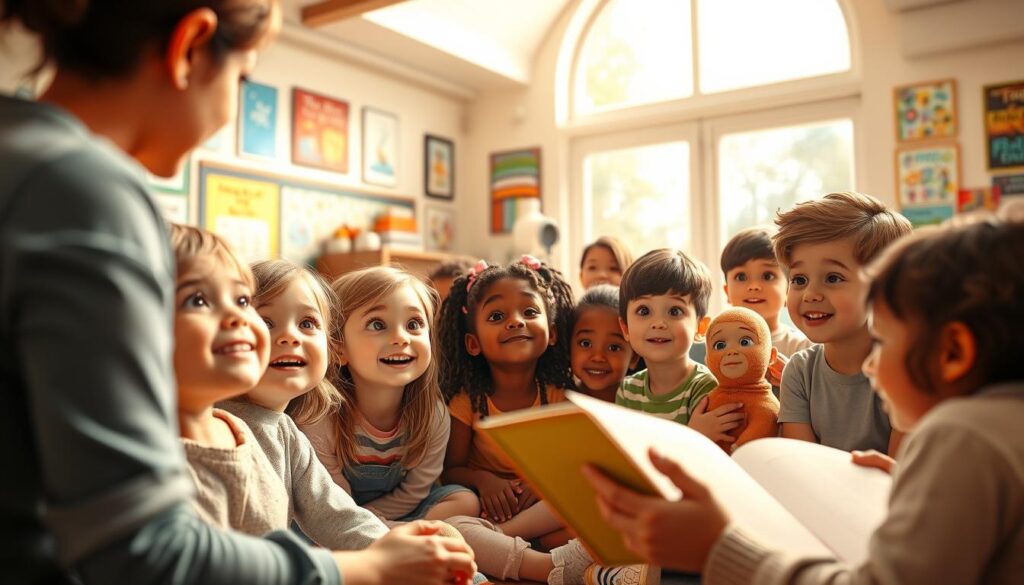
One study involving 200 participants aged 10 to 14 found that children exposed to narratives emphasizing care, fairness, loyalty, and authority demonstrated improved moral reasoning. This age group is particularly receptive to storytelling, as younger children may struggle with comprehension, while older adolescents often face attention challenges.
Here’s how moral storytelling impacts children:
- Behavioral Change: Stories help kids understand the consequences of their actions, encouraging ethical choices.
- Empathy Development: Relatable characters teach children to consider others’ feelings and perspectives.
- Critical Thinking: Moral dilemmas in stories prompt kids to reflect on their decisions and values.
For example, the Defining Issues Test (DIT) revealed that higher moral judgment scores correlate with better recall of complex moral arguments. This suggests that storytelling not only teaches values but also enhances cognitive levels of moral reasoning.
“Stories are more than just tales—they are tools for shaping character and guiding ethical behavior.”
These findings validate the practice of using moral narratives in education and parenting. They also provide a solid framework for improving strategies to teach values. By integrating stories into daily routines, parents and educators can create meaningful learning experiences that resonate with children.
Here’s a summary of key research insights:
| Study Focus | Key Finding |
|---|---|
| Moral Comprehension | Children interpret moral arguments based on their developmental stage. |
| Behavioral Impact | Exposure to moral stories improves decision-making and empathy. |
| Educational Strategies | Interactive storytelling enhances retention of ethical lessons. |
By leveraging these insights, we can ensure that moral storytelling remains a cornerstone of ethical education. Whether at home or in the classroom, these narratives help children navigate the complexities of right and wrong, setting them on a path toward thoughtful, compassionate adulthood.
Conclusion
Through the art of storytelling, we can guide children toward understanding the deeper values that shape their lives. This process combines creativity, science, and personal experience to create meaningful lessons that resonate with young minds. Stories not only entertain but also teach empathy, fairness, and responsibility in ways that feel natural and engaging.
The work we invest in sharing these narratives has a profound impact on a child’s development. By weaving ethical lessons into relatable tales, we help them navigate the complexities of right and wrong. This approach fosters critical thinking and emotional growth, preparing them for the challenges of life.
As parents and educators, embracing this method can shape a generation of thoughtful, caring individuals. Let’s continue to explore and apply these techniques with optimism and care. Together, we can make storytelling a cornerstone of ethical education, creating lasting benefits for our children and society.
FAQ
Why are stories effective for teaching values to kids?
Stories captivate children’s attention and make abstract concepts like ethics and principles relatable. Through characters and plots, kids learn lessons in a way that feels natural and engaging.
How can I choose the right stories to teach moral lessons?
Look for tales that align with the values you want to teach, such as honesty, kindness, or courage. Timeless classics and culturally diverse stories often carry universal themes that resonate with children.
What role does family play in teaching morals through stories?
Families are the first teachers of values. Sharing stories together creates bonding moments and allows parents to discuss the lessons, reinforcing their importance in everyday life.
How do cultural influences shape moral narratives?
Different cultures have unique stories that reflect their traditions and beliefs. Exposing kids to diverse narratives helps them understand and appreciate varying perspectives on ethics and behavior.
Can technology be used to teach moral lessons effectively?
Yes! Apps, audiobooks, and animated videos can make storytelling interactive and fun. Just ensure the content aligns with the values you want to instill.
What are some interactive storytelling activities for kids?
Role-playing, creating alternate endings, or drawing scenes from the story can make lessons more memorable. These activities encourage kids to think critically about the moral themes.
How do moral stories influence a child’s decision-making?
Stories provide examples of right and wrong, helping kids develop a sense of ethics. Over time, they learn to apply these lessons to their own choices and actions.
Are there psychological theories that support using stories for moral education?
Yes, theories like Kohlberg’s stages of moral development suggest that storytelling helps kids progress through different levels of ethical reasoning by presenting relatable dilemmas.

